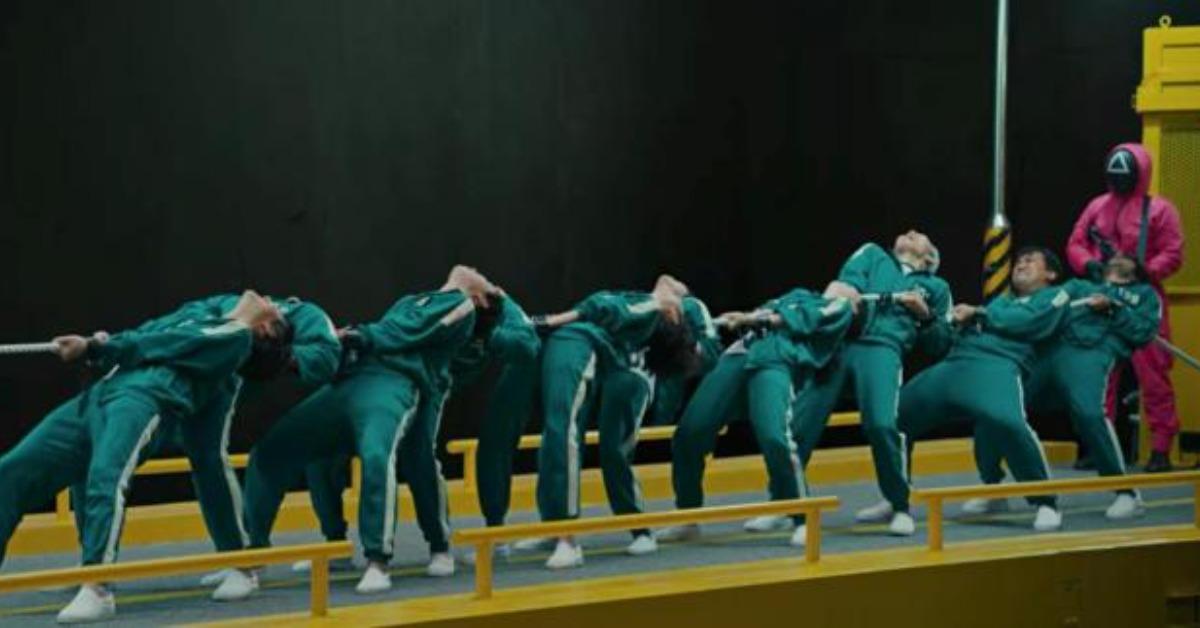
Tug-of-war, the classic game of two teams using their strength to pull the other team towards a center line via a rope. Is it truly solely based upon brute force strength, or can there be a strategic advantage to how people are positioned amongst each other, who is selected to be at the front or rear of the team, body orientation, and working as a cohesive unit? Well, if you are like me and have been binge watching Netflix’s latest South Korean drama, “Squid Game” then you have most likely seen the tug-of-war episode and possibly gave consideration to how the application of leadership played such a critical role.
*SPOILER ALERT*
The underdog team of ten decided as a group to use the advice of an elderly man who had a record of winning the game tug-of-war when he was younger, it was based on a specific strategy of utilizing the strengths of each member and placing each of them in positions that would enable them to succeed (Dong-hyuk, 2021). The first rule was to select a good leader to be at the front of the team, so he/she can be closest to the opposition leader and set the tone for the members behind him/her; if the leader appears to be dispirited or weak, the game is already lost. This is the epitome of “leading from the front” or “leading by example” and it shows others how to extend and push for greatness (Newlands, 2016).

Selecting the right kind of leader for tug-of-war or any other situation is what Austrian psychologist, Professor Fred Fiedler, based his contingency model off of in the mid-1960s (Pennsylvania State University World Campus [PSU WC], 2021). Fiedler recognized that leaders have general behavioral tendencies and specifies situations where certain leaders may be more effective than others (PSU WC, 2021). The main character, Seong Gi-Hun was selected to be at the front of the rope and chosen for his positive leader-member relationship with the group, which is the most powerful element of situational favorability (PSU WC, 2021).
The second rule of this strategy was to choose someone dependable for the end of the rope, like the anchor of a ship (Dong-hyuk, 2021). A quiet yet courageous character, Ali, was selected based on his leadership behavior of valiantly saving the life of Gi-Hun in the pilot episode. According to Hill (2010), the future of leadership is not going to be focused on leading from the front, but rather from behind. This may seem contradictory to emphasizing the importance of leading from the front, but I believe it to be complimentary to leading from the rear. Nelson Mandela associated a leader with a shepherd in his autobiography and said, “He stays behind the flock, letting the most nimble go out ahead, whereupon the others follow, not realizing that all along they are being directed from behind” (Hill, 2010, para. 1). The impact of this life and death situation relied heavily on the leadership effectiveness at the front of the rope, but equally at the rear. According to Hill (2010), those who are exceptional at leading from behind are likely to be different than those who excelled at leading from the front.

The best benefit to applying this contingency theory to a game of tug-of-war (especially with the substantial risk of life or death as seen in Squid Game) is that it accepts the consistent behaviors of all leaders and searches for the unique situations which will allow them to excel. Not only is leadership selection and execution important in games like tug-of-war, but leaders must also embrace this metaphorical game in the workplace and everyday lives. Welcoming the unique consistent leadership behaviors of team members and utilizing them in appropriate situations (or altering the situation to fit their leadership style) will support an organization’s success in the never-ending game of tug-of-war with talent, market share, and resources.
References
Dong-hyuk, H. (Director). (2021). Squid game [Film]. Netflix. https://www.netflix.com/watch/81262752?trackId=14170289&tctx=2%2C0%2Ccd02c30e-227f-4ca3-8421-08130a2b6be1-585006311%2C80969e8b-a4f7-472b-81d2-a526c7233fbf_25552689X3XX1633498124507%2C80969e8b-a4f7-472b-81d2-a526c7233fbf_ROOT%2C
Hill, L. A. (2010, May 5). Leading from behind. Harvard Business Review. https://hbr.org/2010/05/leading-from-behind
Newlands, M. (2016, November 28). 9 powerful ways to lead by example. Entrepreneur. https://www.entrepreneur.com/article/285579
Pennsylvania State University World Campus. (2021). PSYCH 485 Lesson 6: Contigency & Path-Goal Theories – Fiedler’s Contigency Model. https://psu.instructure.com/courses/2132629/modules/items/32790578


